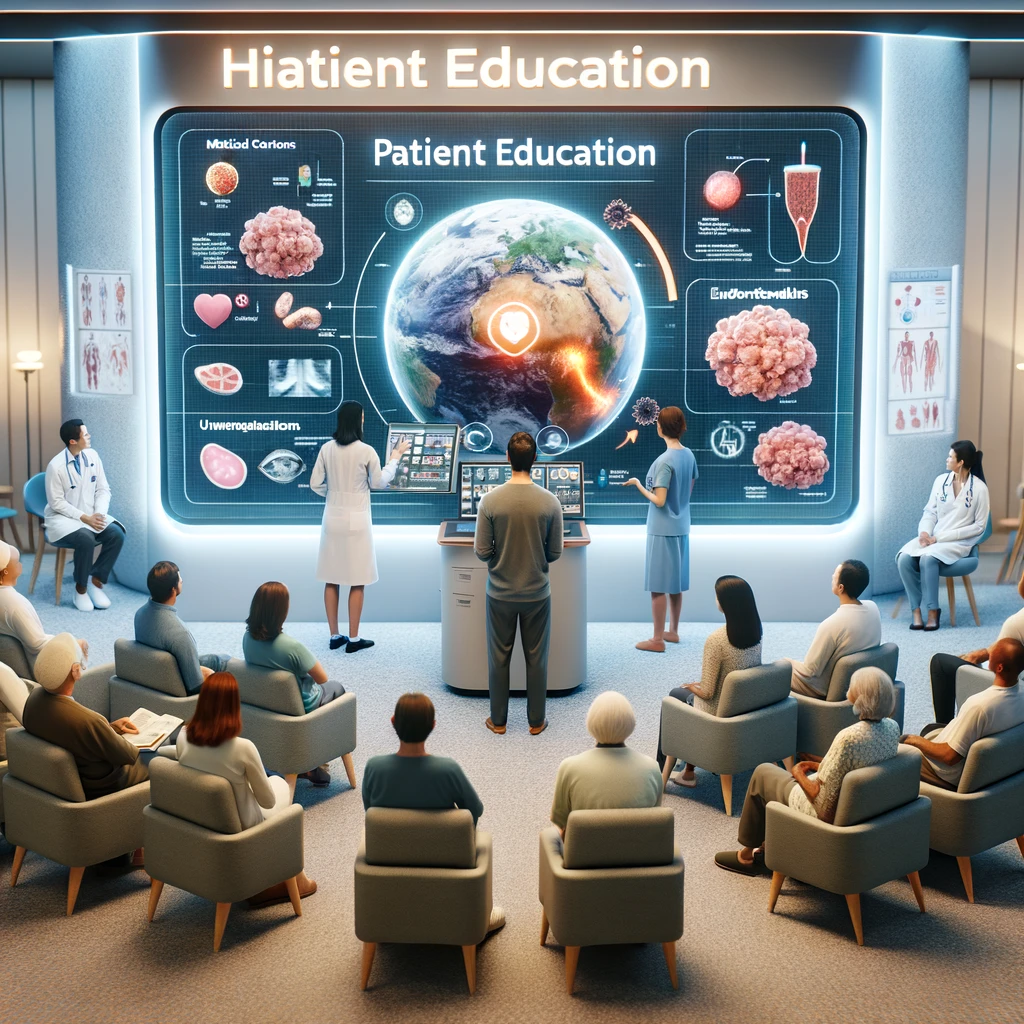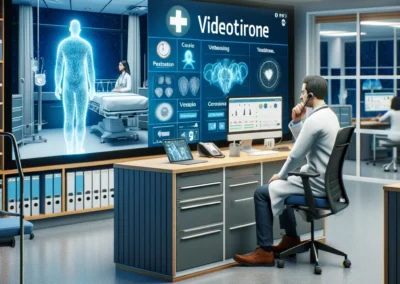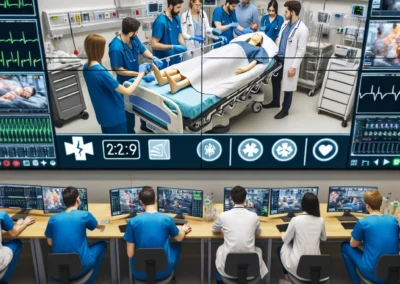Pioneering Healthcare: Integrating Videotron and Metaverse Technology in Hospitals
The integration of Videotron and Metaverse technology in hospitals marks a significant advancement in healthcare. This hybrid technology offers a realm of possibilities, from enhancing patient care to revolutionizing medical training and administration. This article explores the diverse applications of Videotron-equipped Metaverse platforms across various hospital departments and identifies potential users who can benefit from this innovative technology.
Virtual Reality in Patient Care In patient wards, Videotrons equipped with Metaverse technology can be used for virtual reality (VR) therapies. Patients undergoing long-term treatment or those in palliative care can experience calming, immersive environments, aiding in stress reduction and improving mental well-being.
Potential Users: Patients for therapeutic purposes, mental health professionals.
Telemedicine and Remote Consultations Videotrons enable doctors to conduct immersive telemedicine consultations. Through Metaverse capabilities, physicians can interact with patients in a 3D virtual space, providing a more engaging consultation experience than traditional video calls.
Potential Users: Doctors, patients, remote medical consultants.
Surgical Training and Simulation In surgical departments, Videotron-enabled Metaverse platforms offer a revolutionary approach to training. Surgeons can practice complex procedures in a highly realistic, risk-free virtual environment, enhancing their skills and preparedness.
Potential Users: Surgeons, surgical trainees, medical educators.
Emergency Response Training Emergency departments can use these platforms for simulating various crisis scenarios. This immersive training prepares staff for real-life emergencies, enhancing their response capabilities.
Potential Users: Emergency department personnel, paramedics, first responders.
Hospital Administration and Management Videotrons in administrative areas can display real-time hospital data, such as bed occupancy, staffing levels, and patient flow. Metaverse integration allows for interactive data visualization and scenario planning.
Potential Users: Hospital administrators, operational staff.
Patient Education and Engagement These platforms can also be used for patient education, explaining complex medical conditions and treatments in an interactive and understandable manner, thereby improving patient engagement and understanding.
Potential Users: Patients, families, health educators.
Research and Development In research departments, Videotrons offer a platform for visualizing medical research data, facilitating collaborative studies, and exploring new medical innovations within the Metaverse.
Potential Users: Medical researchers, data analysts, innovation teams.
Conclusion The integration of Videotron and Metaverse technology in hospitals is setting a new standard in healthcare delivery and management. By offering immersive, interactive, and highly informative platforms, this technology is not just enhancing patient care and medical training but also revolutionizing the way hospital operations and administration are conducted. For healthcare professionals, patients, and administrators, the synergy of Videotron and Metaverse technology opens up a world of possibilities, ushering in a new era of tech-enabled healthcare.

Here is the image visualizing a patient education session in a hospital using a Videotron. The Videotron is displaying interactive and understandable explanations of medical conditions and treatments. Patients and their families are gathered around the Videotron, engaging with the content and learning about health topics. The setting includes a comfortable patient education area with seating arrangements, and the Videotron serves as an educational tool, enhancing patient understanding and involvement in their healthcare.
hospital-1
Here is the image visualizing a patient ward in a hospital where patients are engaged in VR therapies through Videotrons. The patients are wearing VR headsets and interacting with immersive environments displayed on the Videotrons. The setting includes hospital beds and medical equipment, with the Videotrons providing therapeutic VR experiences to help patients with recovery and mental well-being.
Telemedecine
Here is the image depicting a telemedicine consultation in a hospital using Videotron technology. A doctor is shown conducting a consultation in a 3D virtual space, displayed on a large Videotron. The doctor interacts with a virtual representation of a patient, discussing their condition and treatment. The setting includes medical office furnishings, advanced communication equipment, and the Videotron displaying the interactive 3D telemedicine environment.
Emergency Response
Here is the image visualizing an emergency response training session in a hospital using Videotron technology. Emergency staff, including doctors and nurses, are participating in a simulated crisis scenario displayed on the Videotron. The simulation involves managing a high-pressure medical emergency, with the Videotron showing interactive and dynamic emergency scenarios. The setting includes a training area with medical equipment, mannequins for practice, and the Videotron providing a realistic and immersive training environment.
Hospital Administration
Here is the image visualizing a hospital administration area where staff are managing operations using interactive data visualizations on a Videotron. The Videotron displays real-time hospital data like bed occupancy, staffing levels, and patient flow. Hospital administrators and operational staff are seen analyzing this data, coordinating resources, and planning strategically. The setting includes a modern office environment with desks, computers, and the Videotron as a central tool for operational management and decision-making in the hospital.
Metaverse Hospital 1
Here is the image visualizing a Metaverse application in a hospital setting. The image showcases scenarios where advanced virtual and augmented reality technologies are integrated into healthcare. One part of the image shows surgeons using augmented reality (AR) for intricate surgical procedures, visualized through headsets and interactive displays. Another part of the image depicts patients undergoing therapy using virtual reality (VR), with immersive environments displayed on Videotrons for therapeutic purposes. The setting reflects a high-tech hospital environment, showcasing the innovative use of Metaverse technology in enhancing medical practices and patient care.
Metaverse Hospital 2
Here is the image visualizing a Metaverse training session for nurses and doctors in a hospital, including the use of a large display. The training shows medical professionals using virtual reality headsets and interacting with a large Videotron display, which depicts detailed anatomical models and medical scenarios in an augmented reality format. The environment is a training room equipped with medical equipment, mannequins for practice, and the Videotron, providing an immersive and interactive learning experience for the medical staff.
Metaverse Hospital 3
Here is the image visualizing a Metaverse application in a hospital where surgeons are practicing a surgical procedure on a patient using augmented reality (AR) technology, aided by a large Videotron display. In the scene, surgeons wearing AR headsets are interacting with virtual representations of patient anatomy displayed on the Videotron. The setting includes an operating room with surgical equipment, the patient on the operating table, and the Videotron providing detailed, interactive visualizations to assist in the surgical practice.

















